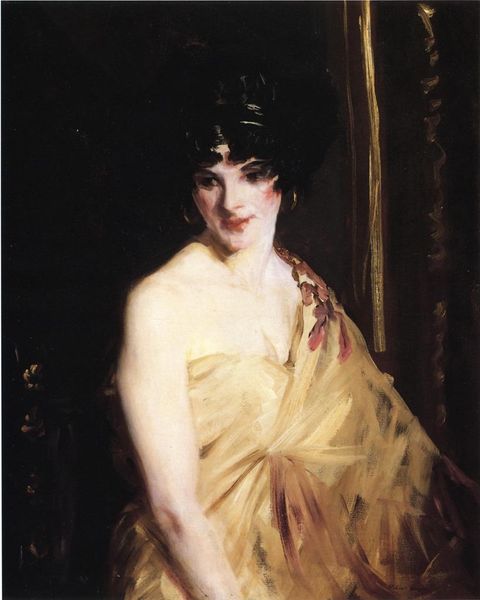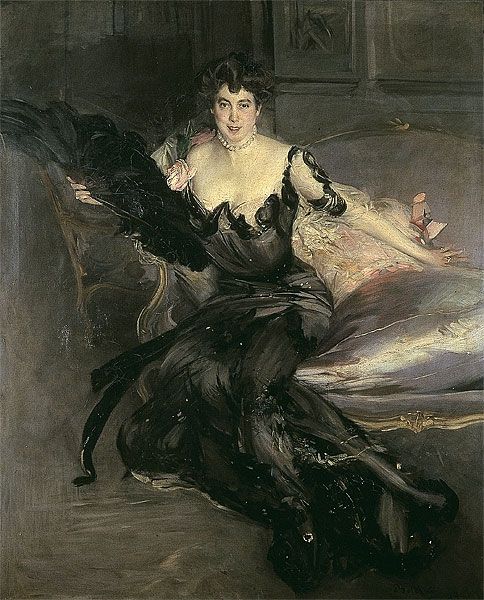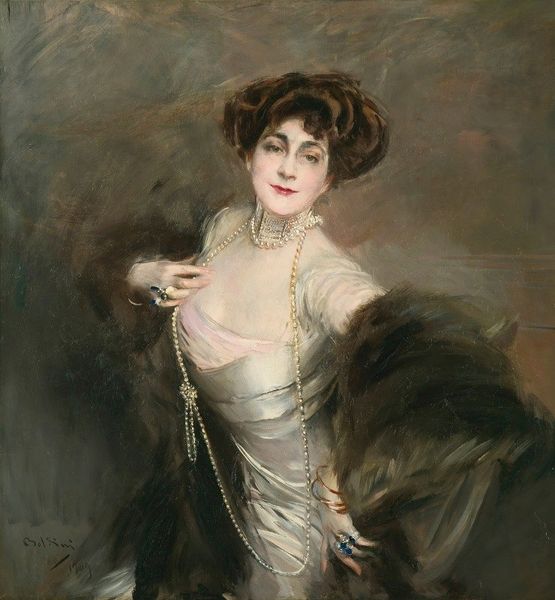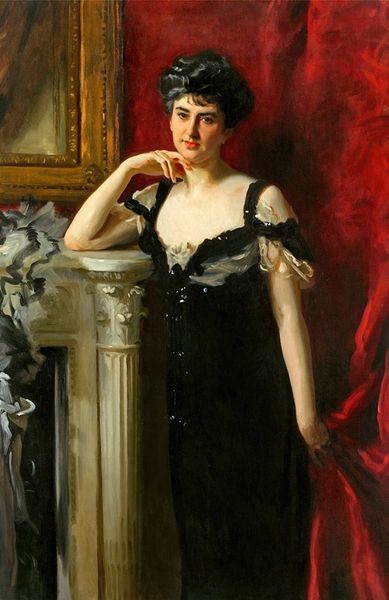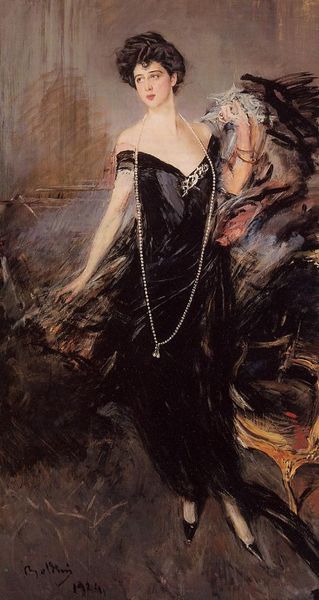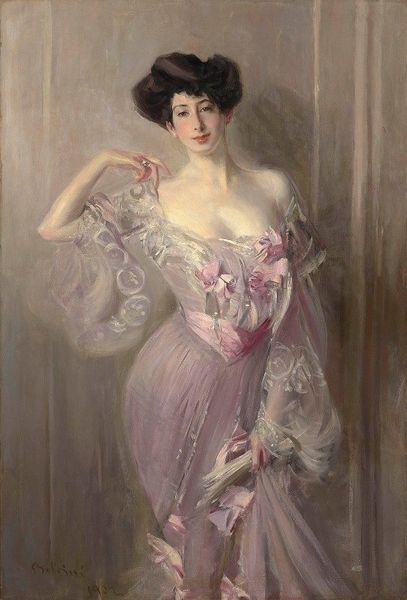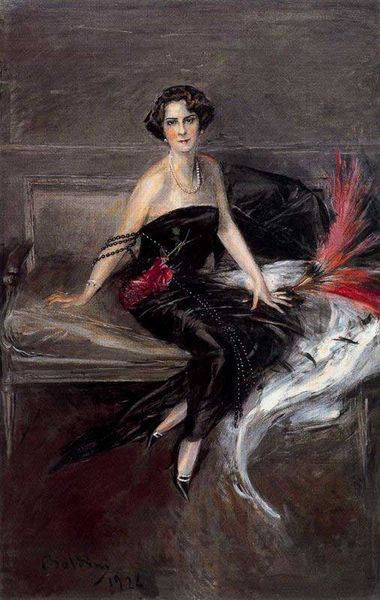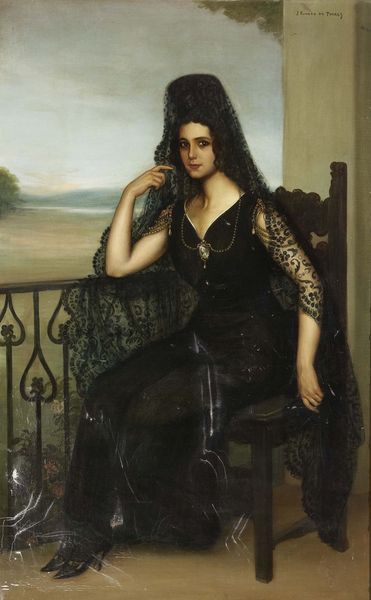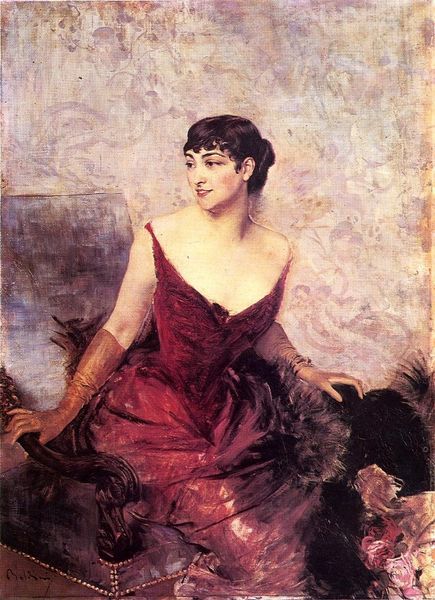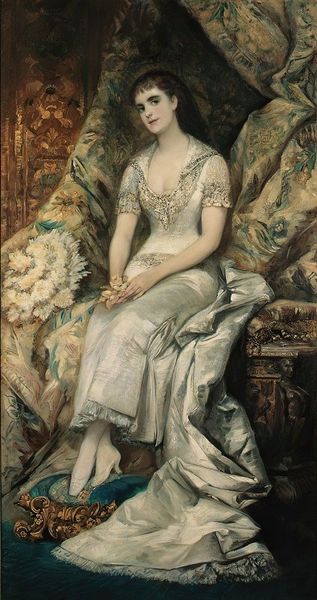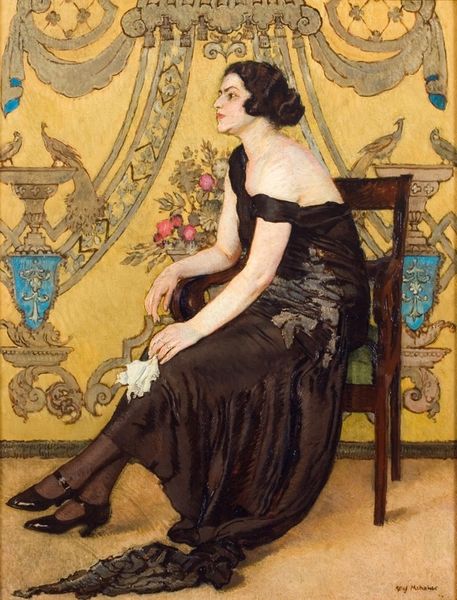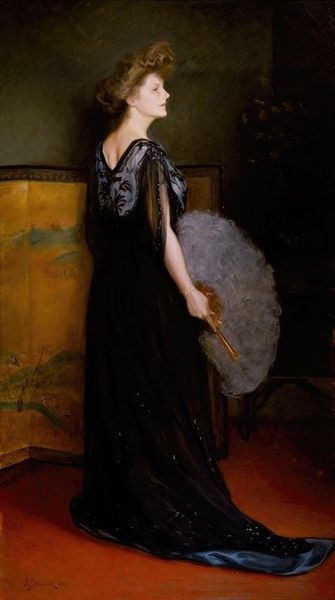
Copyright: Public domain
Editor: So, this is Giovanni Boldini's "Lady Colin Campbell," painted in 1897. It’s an oil painting currently housed at the National Portrait Gallery in London. It's quite striking; she almost appears to be in motion, her dress flowing. What are your thoughts as you look at it? Curator: Well, seeing this portrait, one can't ignore the societal context surrounding Lady Colin Campbell herself. She was quite a scandalous figure of the late Victorian era, known for her beauty, intelligence, and, most famously, her very public divorce case. The painting, therefore, is not just a likeness, but a statement. Boldini, knowingly or not, participates in a public construction of this figure. Editor: A statement? How so? Curator: Look at the composition, the almost aggressive brushstrokes, the confidence in her pose. It's not the passive, idealized portrait that was expected of women at the time. Boldini captured a woman who challenged conventions and embraced a certain level of notoriety. This painting helped to define her public image. It raises questions about the roles expected of women and the price they paid for challenging them. Consider how the painting exists within a lineage of portrayals, each contributing to a larger cultural narrative. What’s more striking to you: the pose, her dress or the background? Editor: Probably the dress, it just all flows around her. Thinking about her scandalous persona and the constraints of Victorian society, it does read as more of a challenge. Curator: Exactly. Boldini captured something rebellious in her spirit, immortalized her and her narrative in art. A statement on what art is for? It reflects its subject, but does not become separate from the context it was made. It also shows that portraiture can transcend mere representation and actively shape public perception. I find myself thinking more about the socio-cultural influences of Art. Editor: Definitely! It reframed how I look at portraits in terms of societal roles. Thank you!
Comments
No comments
Be the first to comment and join the conversation on the ultimate creative platform.

